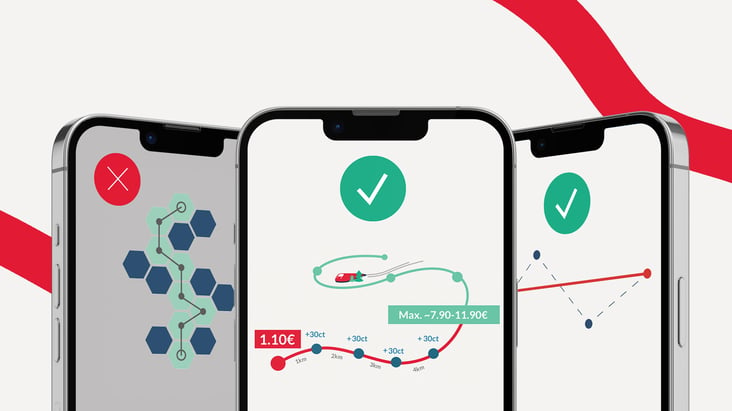.png?width=732&name=Master%20Template%202023%20(2).png)
Our very own Luise Rohland is speaking at next month’s UITP Global Public Transport Summit in Barcelona (4th to 7th June). With her talk titled “How Automated Postpaid Ticketing facilitates fare policy innovation and helps bring back customers”, we sat down with her this week to find out more about the benefits of Pay-As-You-Go (PAYG) ticketing.
FAIRTIQ: Luise, you are Lead Product Management at FAIRTIQ. Can you quickly explain what exactly your job entails?
Luise Rohland: I lead our product & marketing team which addresses the mobility needs of travellers as well as growing the FAIRTIQ partners’ community. I also focus on increasing ridership by testing and implementing innovative and simple fare structures together with our partners.
FAIRTIQ: In the teaser of your speaking slot at UITP you promise that Automated Postpaid Ticketing helps to bring customers back to public transport. That’s a big promise. Can FAIRTIQ live up to it?
Luise Rohland: Yes, on so many levels! First and foremost, FAIRTIQ provides easy access to public transport - but it also builds the foundation for so much more. We all just want to get from A to B, with as little hassle as possible. Using FAIRTIQ eliminates any unnecessary effort around deciding for the right ticket. This is not only great for regular users, but especially lowers barriers for new and occasional travellers who may not be familiar with the regional systems. From user surveys, we know that nearly one third of new registrations in Switzerland and Germany barely or never used public transport before registering on the app. So the app itself is already a great asset in bringing more users into public transport!
On top of that, with post-journey payment (Postpaid), we can nurture the relationship with passengers in a way that hasn’t been possible before. For more frequent users, we can offer tailored solutions to specific groups of public transport users and encourage them to travel more on their regular and less regular routes. We also provide excellent insights into the passenger experience, allowing regional/national public transport networks the necessary data to understand how they can improve their services. Finally, we have a very smart technical infrastructure that can be used as a testing environment. This enables our partners to run trial rollouts within a controlled environment to analyse reactions in customer behaviour to different new offerings and get feedback directly from their users.
FAIRTIQ: One of the examples you’ll be presenting is “+=0” from Occitanie, France, where students pay less the more they travel. How does a system like that benefit the public transport operator?
Luise Rohland: This offering is fairly unusual as it’s a very strategic initiative. It was implemented to strongly encourage the next generation to prioritise public transport instead of using their own private methods of transportation and nurture the long-term habit of using public transport. So while it remains a rather expensive initiative, it’s highly effective in targeting the right group of public transport users.
On the other hand, our system also allows for smaller, incremental and cost-efficient changes. Smaller price changes can be implemented and tested, and parameters can be tweaked, to find the most effective solution. Using this step-by-step testing method helps pinpoint the perfect balance between user-centric and cost-effecting solutions. We have many other examples of fare incentives and promotions that our other partners have trialled and implemented, please visit stand 6B210 and our team will be pleased to explain more.
FAIRTIQ: There are also big plans in Switzerland to adapt to the needs of users. What does “myRIDE” mean for users?
Luise Rohland: Switzerland already benefits from having automated postpaid ticketing available nationally. Swiss passengers no longer have to be frustrated by hidden or confusing fare structures with regional discrepancies. However, while users no longer view this information on the screen, the fare structures are still in place behind-the-scenes.
The Swiss public transport industry (Alliance SwissPass) has realised that this isn’t an effective, future-proof system. The industry is now trialling new forms of ticketing and pricing across various market tests, with the goal to create a more uniform customer experience across Switzerland. We are very excited about this important future development of postpaid ticketing!


-1.jpg?width=732&name=FTQ20_Banners5%20(1)-1.jpg)




Share